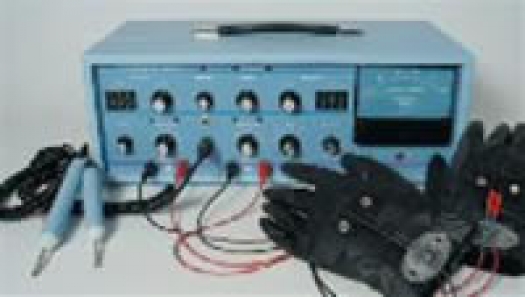A retrospective study to evaluate the clinical outcomes of Frequency Specific Microcurrent treatment for pain
Protocol
- Location: Integrated Pain Solutions Clinic, Portland, Oregon
fsmequipment.jpg

Frequency Specific Microcurrent (FSM) uses microamperage current and the resonance effects of frequencies on tissues and conditions to create beneficial changes to symptoms and health. The Precision Micro ("THERASTIM") frequency specific microcurrent (FSM) device is manufactured by Precision Electronics Ltd and has a 510K (K914813) certificate from the FDA as a class II device, in the category of Transcutaneous Electrical Nerve Stimulation (TENS) device. FSM alleviates and reverses a series of symptoms and ailments, especially related to pain, that usually have very poor or no response to conventional and/or pharmaceutical treatments.
In preclinical research, direct electric current stimulation increases adenosine triphosphate (ATP) production, protein synthesis and membrane transport, and possibly interacts with biochemicals on a thermodynamic level. Clinical evidence supporting the use of FSM for pain is limited to case reviews and retrospective studies.
A review of patients with resistant, chronic myofascial pain in the head, neck, and face found sustained improvement in 49 of 50 cases. A second case review of 22 chronic LBP patients found a 3.8-fold average reduction in pain intensity over an average of 5.6 weeks.
A retrospective study evaluated the impact of FSM on pain and biological markers for pain and inflammation in 54 fibromyalgia patients. The study found that average pain scores on a 10 point visual Analog Scale significantly (p < 0.0001) decreased from 7.3 (SD = 1.2) to 1.3 (SD = 1.1) after the first FSM treatment. In a subset of 6 patients, levels of interleukin (IL)-1, IL-6, tumor necrosis factor (TNF)-alpha pro-inflammatory cytokines, and substance P were significantly reduced while beta-endorphin and cortisol levels significantly. Beta endorphins are physiologically linked to ACTH and are thought to be the reason for the cortisol increase. This link is supported by the reduction in neuropeptide Y, which follows the stress response, which was observed in the study.
Based on the results of the above studies and the lack of evaluation of FSM for Facet Syndrome pain specifically, a study was undertaken to identify the patient profile of FSM users, prior or concomitant treatments sought, typical duration of FSM use, and the analgesic effects of treatment.
A retrospective study was conducted to evaluate the clinical outcomes of the FSM treatment for patients presenting at the Integrated Pain Solutions Clinic in Portland, Oregon, for Facet Syndrome (FS) management and relief. Demographic, diagnostic, treatment, and pain data were extracted from medical records of new patients with FS who received FSM, and rated pain pre and post treatment using a 10 point scale.
Analysis included means and standard deviation (SD), frequencies, paired t-test and mixed model repeated measures analysis for change in pain, adjusting for covariates (age, sex, concomitant treatments, treatment frequency and duration). Of 319 patients, 72 met inclusion criteria. Patients were mostly women (70.8%), 46.2 (SD = 13.8) years of age, injured in motor vehicle accidents (45.8%), and users of other therapies (43.1%) prior to FSM. They received 8.54 (SD = 8.19) FSM treatments over 12.5 months (SD = 16.9) while 47.2% used no concomitant therapies and 43.1% used at least: chiropractic (29.2%), myofascial trigger point injections (13.9%), or analgesics (5.6%). Pain scores, independent of covariates, decreased significantly (p < 0.0001) from 5.75 (SD = 2.11) to 4.01 (SD = 2.10) after FSM treatment. Half (48.6%) of patients reported a 2 or more point reduction in pain.
This study suggests that FSM may significantly reduce chronic pain from FS and warrants further investigation in a randomized, double-blind, placebo-controlled trial.


